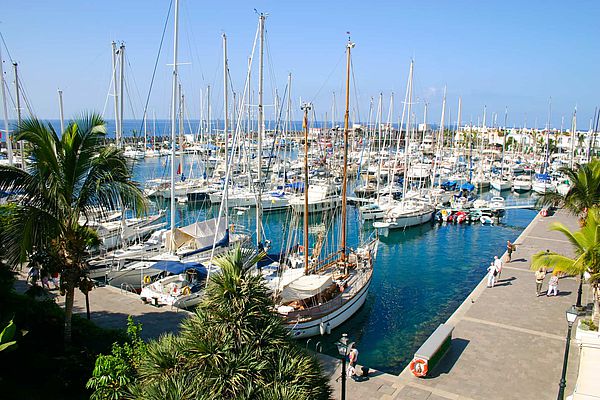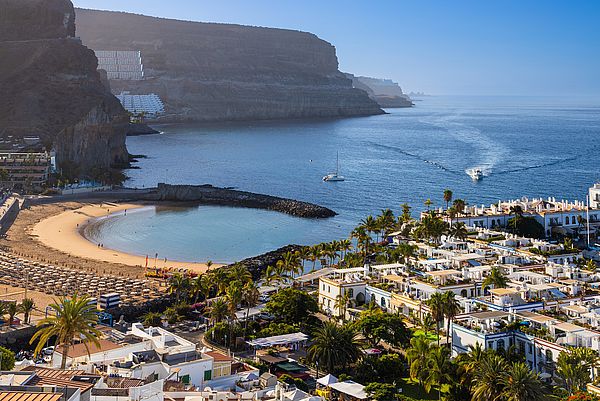Today, the coastline around Mogán is a hive of attractive tourist resorts, with its many restaurants ready to treat their visitors, who come in search of fun sea activities, including fishing. They serve up many excellent locally sourced products, notably with their famous fruits such as papaya, mango and avocado from inland; while in the other direction, out to sea where local fishermen from Arguineguín or Puerto de Mogán bring in a huge variety of fish and sea food, the highlight being the seasonal tuna that is so highly regarded by the islanders that it carries the label of “from Mogán” after it.
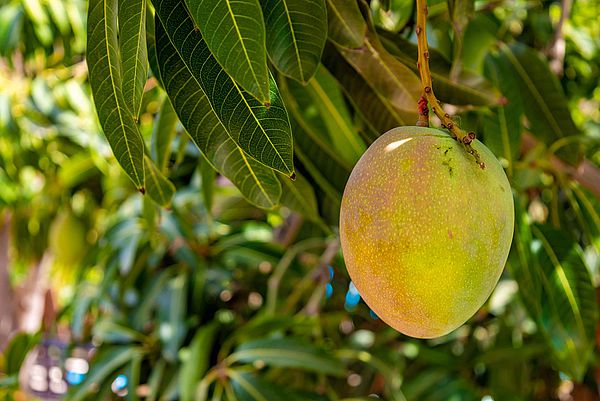
The steep and uneven terrain of this municipality, which provides winding footpaths for hikers to delve into a countryside of stunning beauty, is not all down to nature. The islanders’ activity has also played its part, as recently as last century, with all the hard work put into the fields and crops, both for their own consumption and to provide for many European visitors, under quite difficult conditions. Interestingly, today’s tropical fruits were once juicy tomato crops.
Indeed, one of the islanders who used to live right next to where the island’s largest reservoir was built, the Soria Reservoir, remembers how “we used to go collecting tomatoes around Cercados de Espino, three hours away from the Soria path by donkey. The only means we had at the time was a basket”, he explains, adding that he became a basket maker at a very young age, making full use of the abundance of palm tree leaves. “The baskets had to be built to be able to carry 50 kilos. When we got to Cercados de Espino in the middle of the harvest, we sometimes had to come back a second time, three hours downhill, then another three hours uphill. The only thing we had to transport the fruit was a basket”.
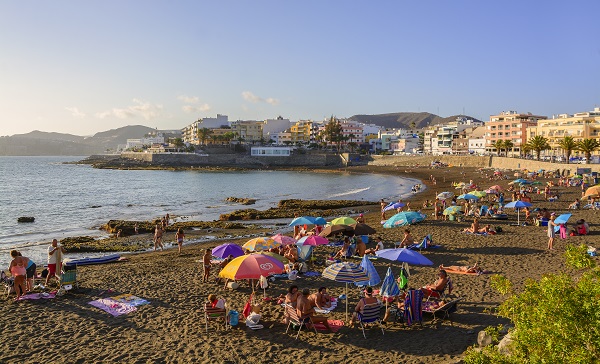
If tomatoes were to be sent over the sea to English ports or other continental destinations, the fruit from Mogán would reach the markets at the island’s capital city with an admiring seal of approval: on the back of a donkey this basket maker recalls transporting peaches from Soria and oranges from Mogán, on a journey that took five hours, along footpaths as far as San Mateo, where they would then join a road the rest of the journey down to Las Palmas de Gran Canaria.
The modern motorways that now abound around Mogán, make this testimony about Manuel Pérez sound like a story from the distant past, but actually it is quite a recent event.
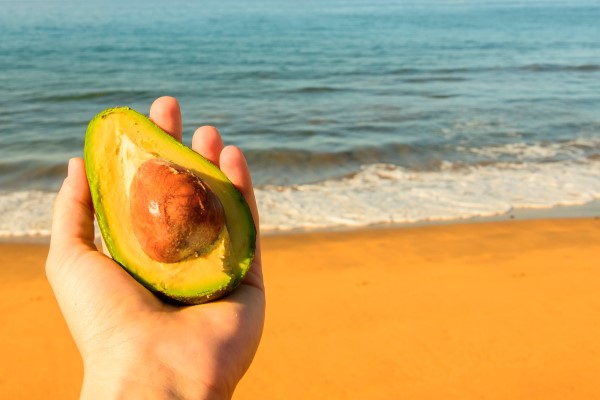
In the same way, the fishermen from this part of the coast also still go out in search of sea fruits, in conditions that have vastly improved, as sailing and rowing boats have now been replaced by vessels with powerful engines. However, nobody can deny that their profession requires large amounts of strength and effort. They are guided by the waters as if they were roads, as they know their depths and have them marked out as if they were on land. This is how the seafood of Felipe or that of La Morena is brought in for winter, for fishing red porgy or sama, or going further afield in search of much admired tuna fish in the summer.
They also know which fish are coming without seeing them, in the old days with the sails down and nowadays with the engine switched off. They just wait, in total silence. “There are a lot of small grouper fish, dragging along”, the fisherman can feel as he holds onto the cord with hooks on the end. He knows they are groupers because of “how they bite”. “We’ll get a big’un today”, he adds. And when it comes, he knows that “the sama will be up next. The big ones always follow the little ones”. And as he reels it in, he’s right: “The sama tugs hard and floats as he is drawing in air through his belly”.
